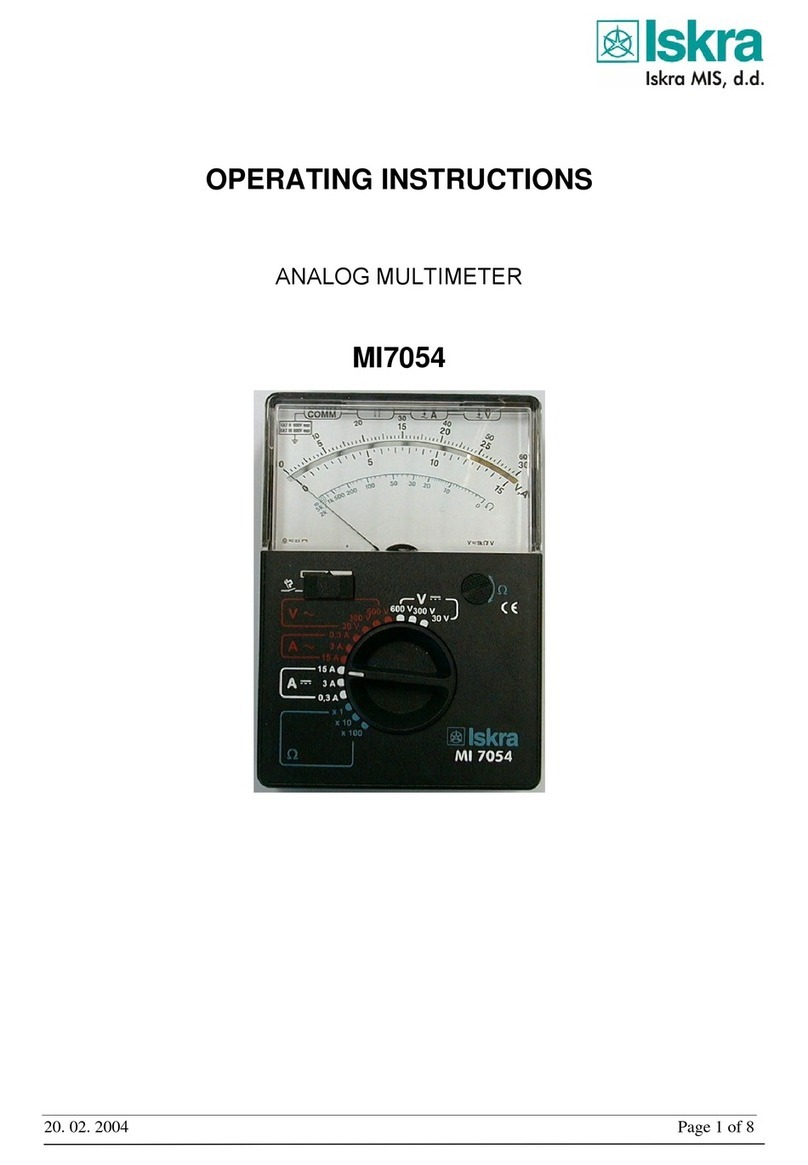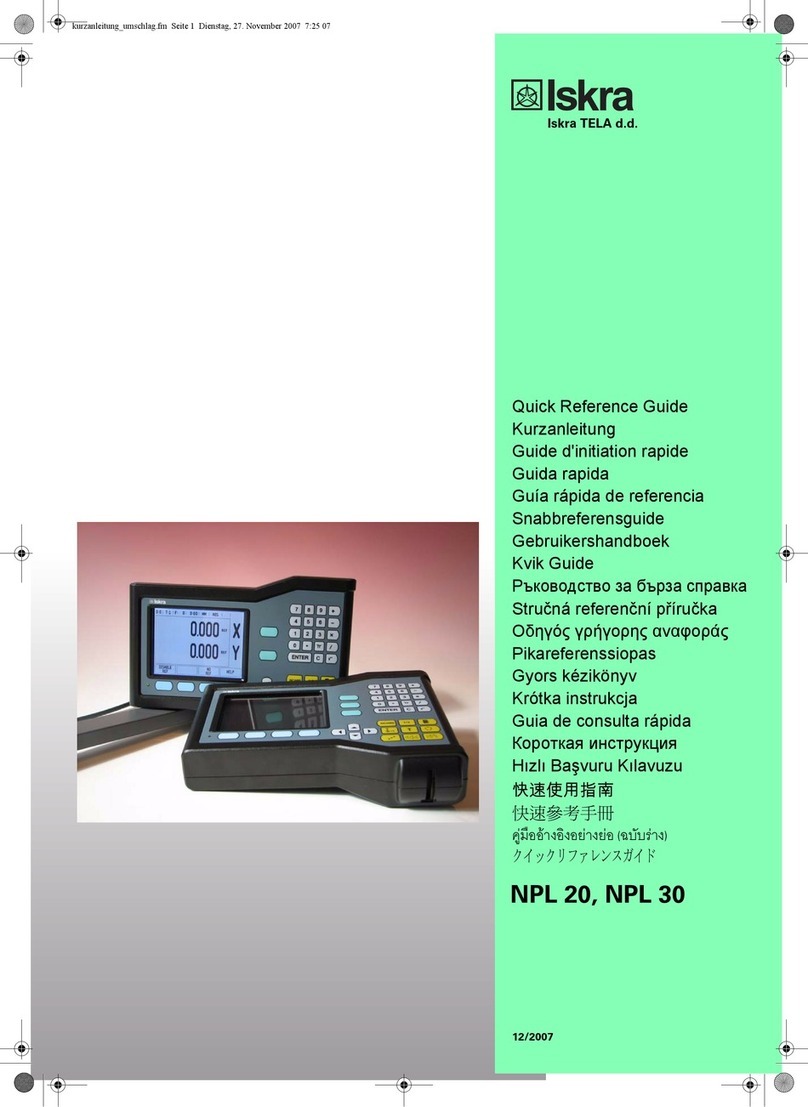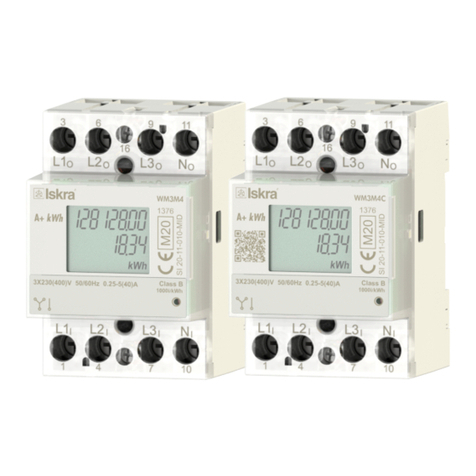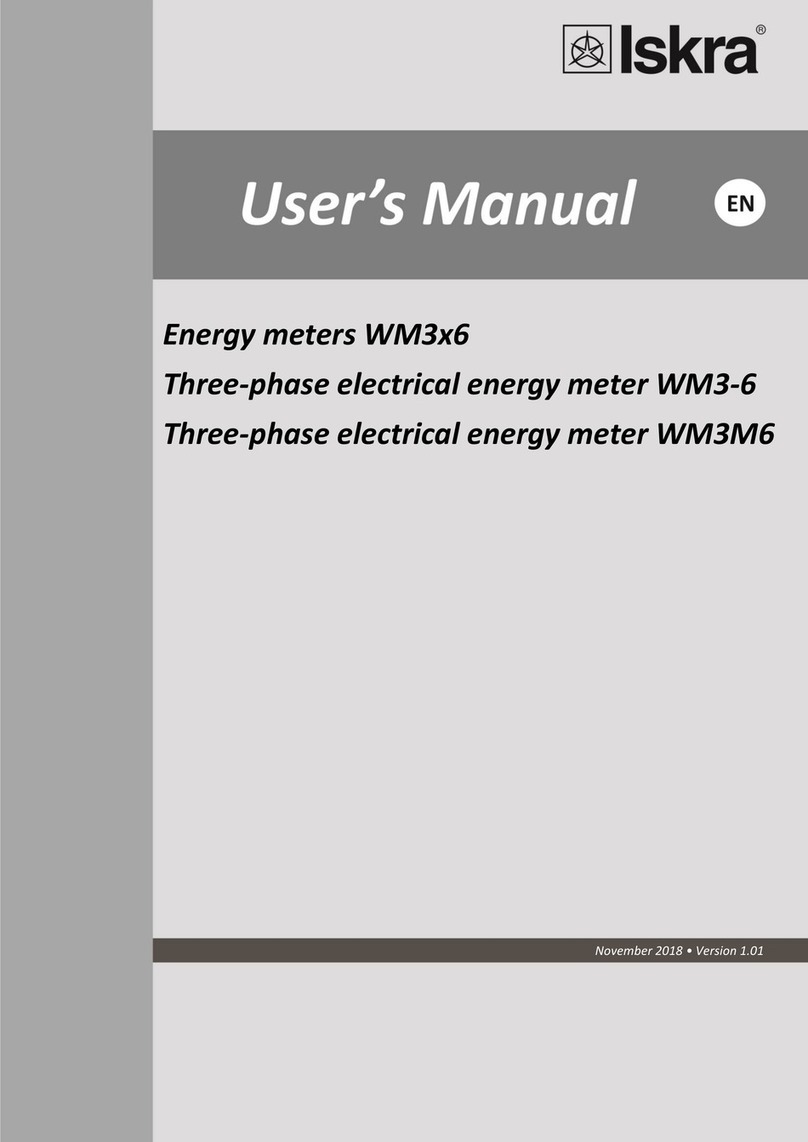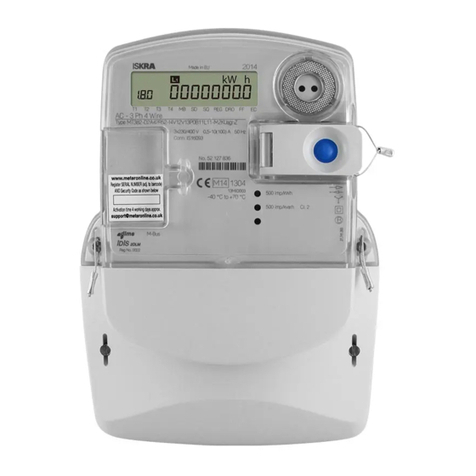
BASIC DESCRIPTION AND OPERATION
1.2 Single-phase energy meters application
Energy meters can be equipped with an optical (IR) communication port on the side as a standard. A
special USB adapter (size 1 DIN module) can easily be attached to it. It can be used for direct
communication with a PC to change settings of the device without any communication installed.
Meter has an optional built-in optical (IR) communication port on the side. It can be used for
controlling Bistable switch –BICOM or in combination with SG smart gateway (more info about BICOM
and SG can be found on https://www.iskra.eu/.
Meter can be equipped:
S0 output (pulse output) is intended for connection to the devices that are checking and
monitoring consumed energy.
RS485(Modbus) serial communication with the Modbus protocol. Data is available in different
formats prepared for easier integration into third party control and monitoring systems.
M-Bus serial communication, which enables data transmission and thus the connection of the
measuring places into the network for the control and management with energy.
NFC communication for easy setting and downloading meter data via a mobile app.
Communication modules enable data transmission and thus the connection of the measuring places
into the network for the control and management with energy.
On the housing there are only two terminals, thus only one functional extension is possible (serial
communication, M-Bus).
NFC communication is implemented for parametrization as well as for reading data (e.g. counters,
measurements, etc) from the smart meter. Special application available from our internet site has to
be used to perform such operations.
Special version IE14MDC with RS485 communication is equipped with a crypto chip and can produce a
relevant digital signature in applications that require additional data security.
1.3 Main features
Single-phase direct connected DIN-rail mounting meters.
Active energy class B for MID approved types according to EN 62053-21 and class 1 for other
types (non-MID version) according to EN 50470-3.
Reactive energy Class 2 according to EN 62053-23.
Bidirectional energy measurement (import/export).
Basic current 5 A (Ib).
Maximum current 40 A (Imax).
230 V rated system voltage input (Un).
Voltage operating range (-20%...+15%) Un.
Reference frequencies 50 Hz and 60 Hz (MID certified).
Power consumption voltage circuit 10 VA at Un.
Power consumption current circuit 0.1 VA at Ib.
Temperature range climatic condition as indoor meter (-25 °C…+55 °C) according EN 62052-
11.
Custom LCD display with 7 digits (100 Wh resolution)
Multifunctional front red LED.
LED constant 1 imp/Wh or 1 imp/varh.
IR(Modbus) serial communication (optional).
Capacitive touch button for setting and control (optional).
Backlight for better visibility (optional).
Special functions added for easier integration into monitoring and control systems.
Measurement of
opower (active/reactive/apparent),
oenergy (active/reactive/apparent),













